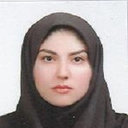Serum lipid profiles in patients with beta-thalassemia major and intermedia in southern Iran.
Palabras clave
Abstracto
BACKGROUND
Beta-thalassemia is considered to be the most frequent hereditary blood disorder worldwide. Lipid abnormalities have been detected in different types of beta-thalassemia. The aim of this study is to assess the lipid profiles in beta-thalassemia major (BTM) and beta-thalassemia intermedia (BTI) patients in southern Iran.
METHODS
The study group consisted of 55 BTM patients and 50 BTI patients. The control group included 130 sex-and age-matched healthy participants. Serum lipids profiles (total cholesterol, triglycerides, LDL-cholesterol, and HDL-cholesterol) as well as hemoglobin (Hb) and ferritin, were compared between the three groups. P value < 0.05 was considered statistically significant.
RESULTS
There were no significant differences between BTM and BTI patients regarding age or sex. Mean triglyceride concentration was not significantly different between patients and controls. Total cholesterol and LDL-cholesterol were significantly lower in patients with BTM and BTI in comparison with controls (p < 0.001). HDL-cholesterol was significantly lower in patients with BTI than in controls (p < 0.03).
CONCLUSIONS
In patients with BTM and BTI, total cholesterol and LDL-cholesterol were lower than in control participants. The mechanisms that may account for these findings are increased erythropoiesis and cholesterol consumption in BTI, and iron overload and oxidative stress in BTM.



